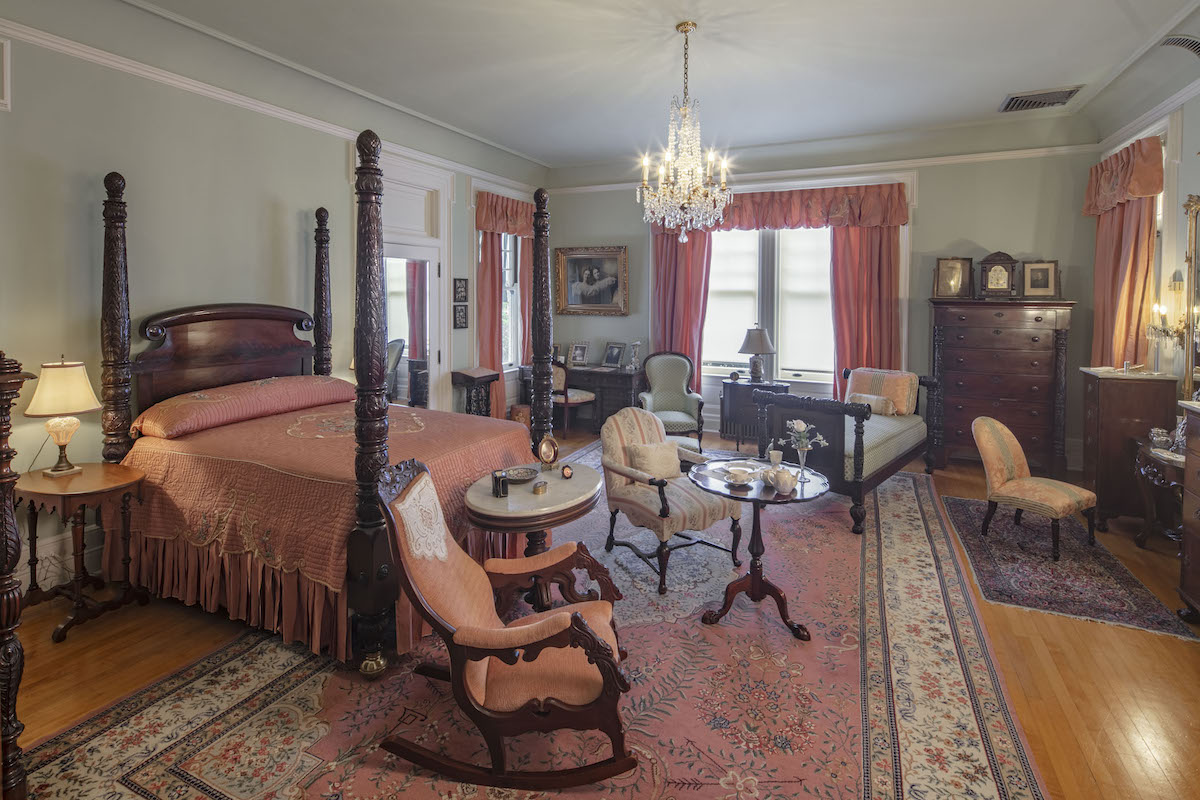Primary Bedroom ClosetThe primary closet is original to the home's design. It's assumed that Ida had this closet to herself, considering that W.P.H. used the North Bedroom as a dressing room. Not all of Ida's clothing, accessories, and shoes fit into this storage space. It was customary to rotate clothes between this closet and additional storage areas on the third floor, based on seasonal fluctuations. The latched doors kept clutter hidden from view and also provided protection from dust and sunlight, detriments to the care of delicate textiles.
Mamie occupied the Primary Bedroom after her mother's passing in 1950. This would've been her closet at that time.
The audio clip below is an excerpt from an oral history interview collected from Mamie McFaddin by June Smith for the Beaumont Enterprise and Journal on August 2, 1974 when Mamie was 78 years old. June asks Mamie about purchasing clothing at the turn of the 20th century.
Oral History Transcript:
June Smith - Did your mother have them [her clothes] made?
Mamie Ward - Mother had them, yes, Madame Dunlevy in Cincinnati [Ohio] made Mother’s trousseau and her clothes for years and years and years until we got good shops in Houston. Madame Dunlevy. When we would go up to West Virginia, she would stop by and select things. Madame Dunlevy went to Europe and got her materials from Europe and we'd select them and on our way home she [ICM] would stop back for fittings. She [Madame Dunlevy] sent then, one dress in a box, and I can remember how thrilled I was when those boxes came, to see the beautiful dress. The [dresses] were really something very different and very unusual; they were really works of art. They were stuffed with tissue paper, and when you'd take them out, they were in perfect condition. The dress that I wore in my cousin's [Kydie McKee] wedding..I was a flower girl..Madame Dunlevy made my dress for that, because I was the flower girl.
June Smith: And she was in St. Louis?
Mamie Ward: Oh no, Cincinnati, Ohio. See, on our way to West Virginia, Cincinnati is only a three hours ride from West Virginia. My family always shopped in Cincinnati, my West Virginia family, shopped in Cincinnati. So my mother, we'd stop on our way up for several days in Cincinnati for Mother to make her selection and tell Madame Dunlevy what she wanted, and then she'd come back in the fall to have her fittings. There was a tailor in Cincinnati where she had her suits tailor-made. Now that was before we had shops, good shops in Texas. My wedding trousseau was all bought in Dallas, at Neiman's.
General Audience Tour






